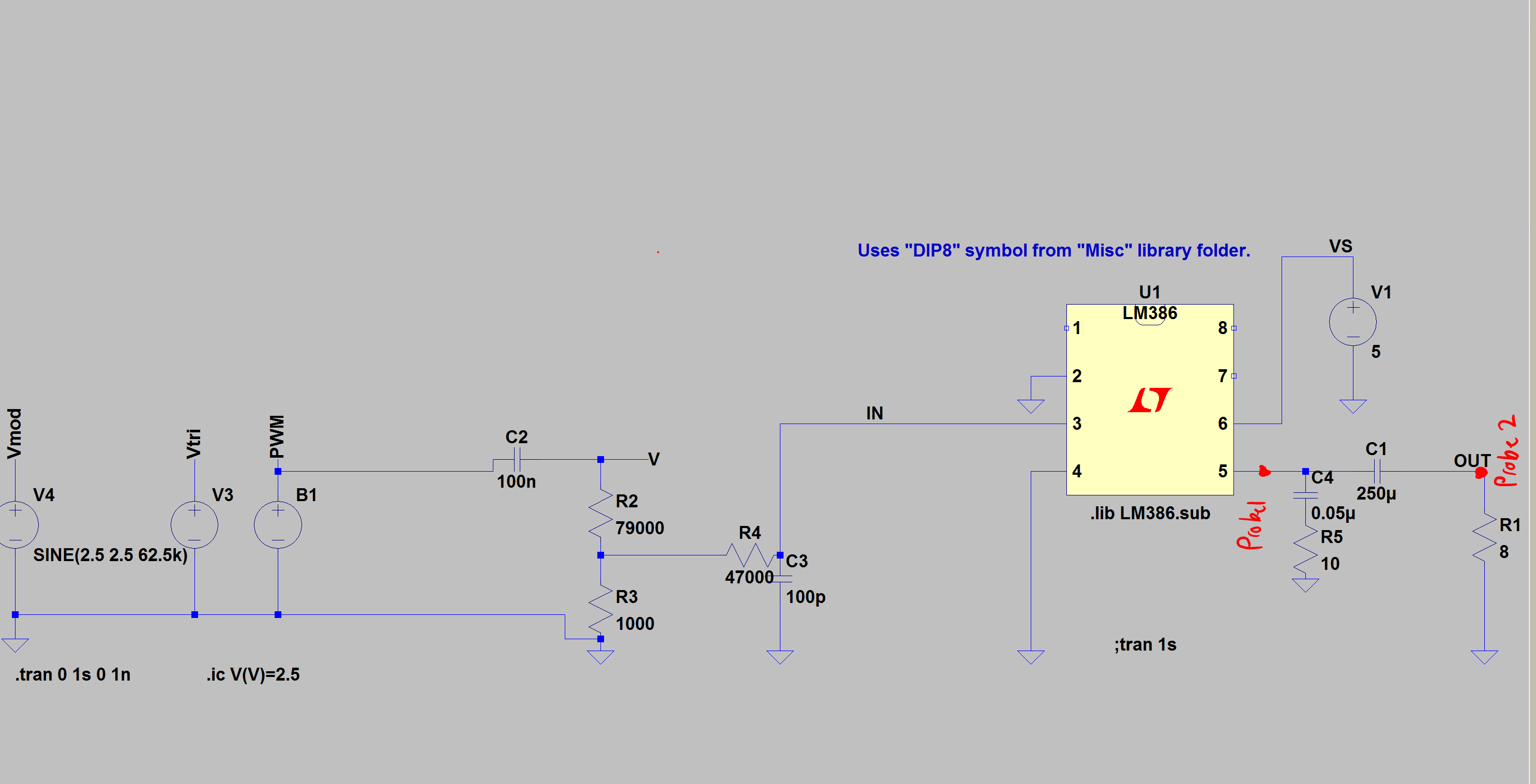i am trying to create an analogue wave so that an audio signal can be played. Using PWM,(i.e. converting a square wave to an analogue signal hence need to use high pass then low pass filter before amp). For my circuit as shown below i have a high pass filter to remove the dc bias of 2.5V from my input source (5Vp-p, 2.5V dc bias, Amplitude=2.5V). I need the volatge divider after C1 so that my input voltage will drop to less than 0.4V to -0.4V. I have then used a low pass filter after this divider as i need to attenuate the frequencies of >30.5Khz (i understand >20kHz is not audible but it was stated that i should still use one, also converts signal to analogue type).
What i am having trouble with is:
For my output wave (straight after my amp), the bias is at 3.3V but however i thought the output signal of the amp will give a dc bias of the VCC/2 so 2.5 in my case?
For my final output signal going into the speaker (probed at the top node of the 8ohm resistor) my signal starts at a bias of around -0.3V but then levels out to a bias of around 0V. I am confused to as why the wave just doesnt start at 0V but instead levels out as seen. I understand this is only for 5ms then levels out but was just confused if it was posible to input a -ve wave into the speaker without a positive peak (i.e. usually ur inputting positive to negative waves)
For the components after the amp they have been placed there as they need to be there (i.e. remove dc offset of output wave for starters etc. Also are in the datasheet).
This circuit is what i have built and i was wondering if you could help explian why this output wave is looking like this.
Note: Please dont just say read the data sheet as i have looked at it many times or please dont just say this is the wrong circuit for this purpose as i believe that it is actually correct for my purpose. Also i know that my waves are pretty steep and arnt smooth essentially, as in i know i can use a higher order filter. Also i cant just actually test this in a real world application, such as by using an oscilloscope as i dont have the resources just yet available to me.





